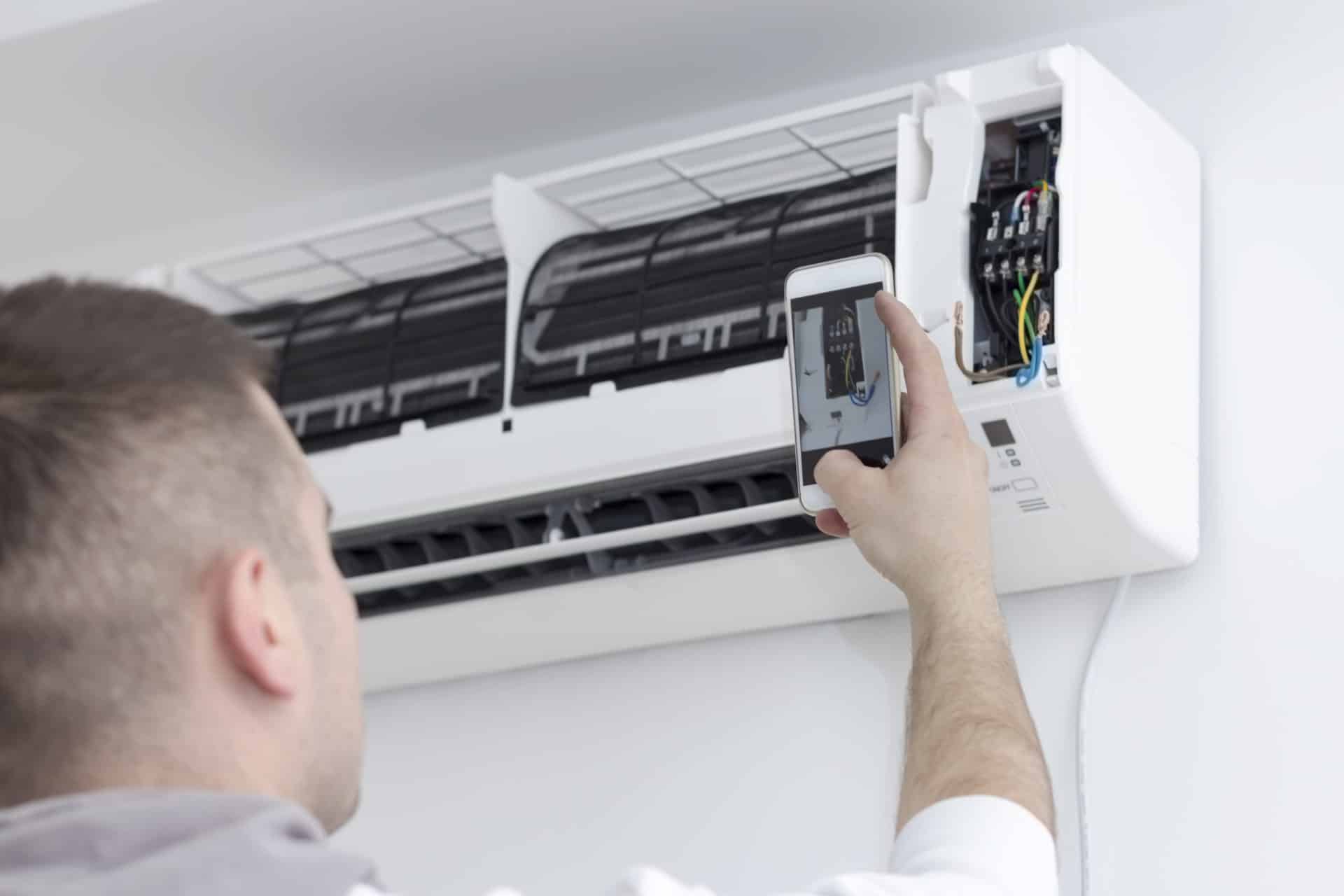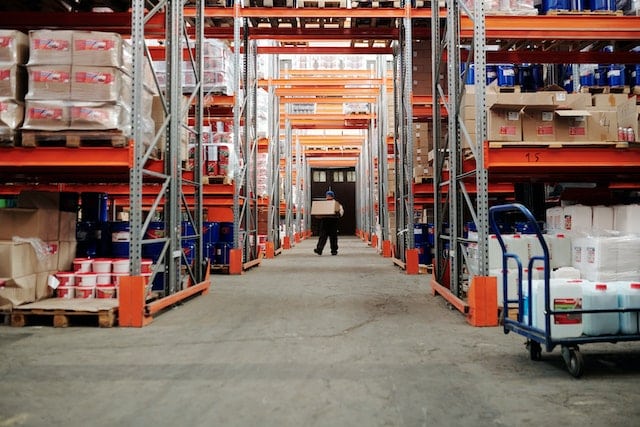Air Filter Maintenance Checklist

Learn about filter types, signs of a dirty filter, essential maintenance tasks, step-by-step guides on air filters, and the benefits of regular maintenance.
Heating, ventilation, and air conditioning (HVAC) systems are an integral component of any commercial or industrial facility. Air filter upkeep is a crucial part of HVAC maintenance, ensuring comfortable working temperatures and keeping clear air flowing throughout a building. The following guide will help you and your maintenance team better understand the importance of maintaining HVAC air filters as a key part of facilities management.
Understanding Air Filters
Air filters all possess a minimum efficiency reporting value (MERV) rating, with higher ratings indicating better effectiveness at removing smaller particles. Indoor and outdoor air contains particulate contaminants that can affect health and sensitive production materials. It’s important to identify which air filters your system requires. Determining a filter’s need for cleaning or replacement is also vital for effective HVAC air filter upkeep.
Types of Air Filters
When inspecting and maintaining an HVAC system, you’ll most likely encounter one of these standard styles of air filters during HVAC preventive maintenance.
- Fiberglass: Blue fiberglass filters handle large particles and usually have a MERV rating of 1-4. These are often used as a front-line option at an intake, allowing higher-rated filters to capture smaller particulates further down the line.
- Pleated: Typically made of cotton, polyester, or paper, these filters possess accordion-like folds or pleats and can have a range of MERV ratings. The folds provide more surface area, which enables the filter to capture more contaminants than a flat surface.
- HEPA: A HEPA filter is a high-efficiency mechanical air filter capable of capturing extremely small particles (up to 0.3 microns). Many HEPA filters boast a MERV rating of 16 or better.
- ULPA: Ultra particulate low air (ULPA) filters employ layers of fine mesh of decreasing mesh size to capture smaller particles than even a HEPA filter. Capable of grabbing particles of 0.12 microns or larger, clean rooms and pharmaceutical companies often use ULPA filters.
- Mechanical or Electronic: Mechanical air filters are your standard style of filter. You slide the filter into its designated place in an airflow chamber, and physical materials capture dust and particles as they pass through. Electronic or electrostatic filters use static electricity to attract particles to a collector, which you can later clean.
Signs of a Dirty Air Filter
Facilities typically follow an HVAC maintenance checklist when cleaning or replacing filters. However, certain signs may present themselves ahead of planned maintenance. These indicators may suggest your air filters need immediate attention.
- Reduced airflow: This sign usually accompanies sounds of strain on HVAC equipment and other machinery that moves air, such as air compressors.
- Increased energy bills: Increased strain on HVAC units from dirty filters often results in a spike in utility bills.
- Increase in allergies and respiratory issues: Personnel’s persistent coughing and sneezing can be a sign you need to check your HVAC air filters.
- Visual inspection of filters: When in doubt, take a look. Heavy particulate buildup is easy to spot when you examine an air filter.
Air Filter Maintenance Tasks
An HVAC maintenance checklist for facility managers usually involves monthly and quarterly upkeep tasks. If signs of a clogged or dirty air filtration system present between scheduled maintenance, it’s best to take the following steps to address these indicators. Delayed maintenance may result in health issues for personnel and increased energy costs.
Inspect for Blockages
Examine heating and cooling system vents and ducts when reviewing your preventive maintenance checklist every quarter. Ensure the airways are free of obstructions and debris and clean as needed.
Remove Surface Dust
Use an air compressor to blow surface dust from any clogged filter you encounter on inspection. Examine the filter once more for blockage and thoroughly clean reusable filters.
Replace Clogged Filters
If going over them with low-pressure compressed air doesn’t leave you with sufficiently clean filters, replace any clogged filters with new ones.
Seal and Gasket Check
Once per quarter, thoroughly examine HVAC filters for damage around the seals. Damaged filters allow unfiltered air to bypass them, letting particulate contaminants into the air and leading to poor air quality.
Check for Mold or Moisture
Check for moisture and mold around the air filter and in the filter compartment every quarter. Introducing mold into the breathing air through an HVAC unit can have many serious health effects on personnel.
Inspect the Air Vent and Duct
Examine air vents and ducts when going through your preventive maintenance checklist every quarter. Ensure the airways are free of obstructions and debris and clean as needed.
How to Clean Air Filters
Reusable filters generally require a quarterly cleaning. This section will guide you step by step on the best practices for cleaning mechanical air filters as part of a regular maintenance schedule.
1. Turn Off the HVAC System
Switch off the heating or air conditioning system to ensure safety during the cleaning process.
2. Remove Air Filter
Remove the side panel or top cover that protects the filter. Carefully remove the air filter from its slot, keeping track of its position to ensure correct reinstallation later.
3. Examine the Filter
Examine filters for dust, dirt, and debris. If the filter doesn’t have heavy particle buildup and other contaminants, you may be able to reuse it. Check seals and gaskets for dents, chips, and dings. Immediately replace filters with compromised seals.
4. Choose Cleaning Method
Different filters call for different cleaning methods. Choose the method appropriate for your style of filter.
- Vacuuming and air-cleaning: A clean air compressor best cleans electronic and paper filters by vacuuming and blowing particles off the surface. Use a soft brush attachment to loosen dust as you vacuum.
- Water washing: Rinse reusables with warm water, starting with the cleanest side and moving to the dirtiest side. For more stubborn dirt and buildup, do a filter soak in a gentle cleaning solution for a few minutes before rinsing.
5. Reinstall the Filter
Ensure your filters are dry and clean for optimum performance before placing them back into their appropriate slots. Excess water can promote mold in your filter chambers and air vents. Reinsert each air filter in the way it was positioned when you removed it. Make sure each filter is securely in place before moving on.
6. Turn On HVAC System
Once all filters are properly reinstalled, turn your heating or cooling system back on. Listen for any indications of impact on HVAC equipment performance. If you notice poor performance in your equipment, you may need to replace your filters instead.
How to Replace Air Filters
Your maintenance schedule may require you to replace all disposable filters. Regular air filter replacement ensures consistency and reduces unscheduled maintenance. Filter replacement typically involves the following steps.
1. Turn Off the HVAC System
As with air filter cleaning, switch off your HVAC system before performing maintenance.
2. Determine Filter Size
Refer to your system instruction guide for filter specifications. Filters also usually have the dimensions printed on them, which you can note when you remove them.
3. Remove the Old Filter
Take out the old filter and take note of its position in the slot. An improperly positioned air filter can impact HVAC performance. Properly dispose of used filters.
4. Clean the Filter Slot
Remove any debris and dust from the filter slot with a damp rag. Ensure the surrounding chamber and vents are also clean, if accessible.
5. Install the New Filter
Position the new filter into the appropriate slot, ensuring it’s securely in place. Directional arrows on the filter indicate airflow to help you face it properly within the slot.
6. Verify the Seal
Make sure the filter fits snugly in place and forms a proper seal within the slot. A snug fit prevents air from bypassing the filter.
7. Turn On HVAC System
Reactivate the heating or cooling system once the new filter is properly in place. Listen for indications of performance issues.
Benefits of Regular Air Filter Maintenance
Regular maintenance of your facility’s air filtration system can provide several advantages to your organization, including the following.
- Improves HVAC performance
- Extends HVAC equipment lifespan
- Reduces energy consumption
- Keeps utility bills lower
- Improves air quality
- Prevents high maintenance costs
When to Consult HVAC Professionals
A robust integrated facility management software can keep you informed on the performance of all your internal systems, including HVAC. When your facility’s HVAC systems malfunction beyond the expertise of your maintenance team, call on outside HVAC professionals for help.
Clean Air, Clear Minds with ServiceChannel Maintenance Solutions
ServiceChannel is the perfect software solution for monitoring and addressing your HVAC and other facility maintenance needs. Contact ServiceChannel today and move your company toward a cleaner, more efficient way of doing business.



